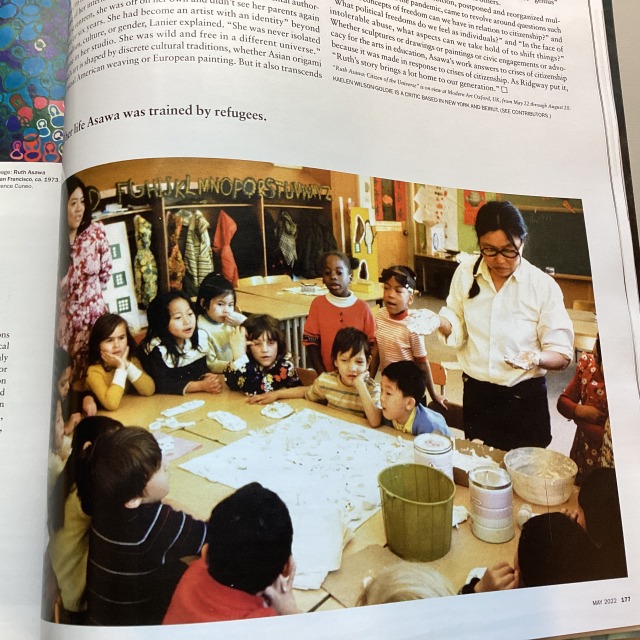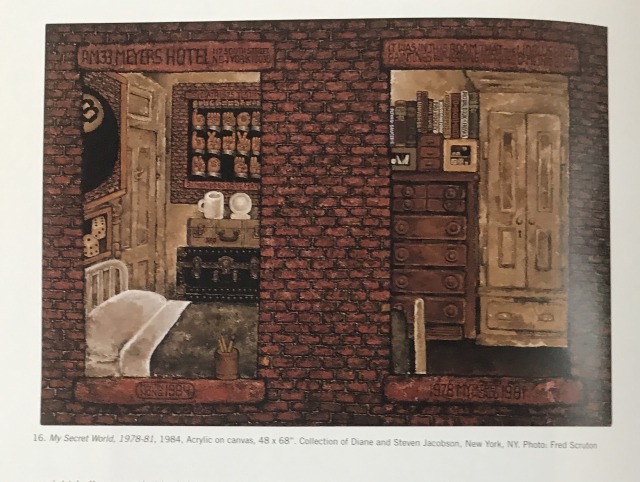#asianamericanartist
Final part to my LNY series: groundbreaking Chinese-American physicist Dr. Chien-Shiung Wu (吳健雄). In her impressively long portfolio, her work falsifying the law of parity was one of the most influential and consequential in the 20th century. She is also known as “The First Lady of Physics” and the “Queen of Nuclear Physics.”
.
I know LNY ended last week but Women’s History Month began today so let’s pretend this was all intentional.
..
.
.
.
.
.
.
.
.
.
.
.
#artinsanely #artaccounts #bestofillustration #arthabit #aestheticart #artistsupportartists #artistsupport #semirealism #visdevart #meds50heads #headstudy #portraitpaintings #physics #womenshistorymonth #womenshistory #asianamerican #asianamericanartist #digital_artist #ipadprocreate #procreate5x #ipadpainting #chienshiungwu #mit #berkeley (at Berkley University)
https://www.instagram.com/p/CL6Izb0sm4Z/?igshid=1lahhoag7y55d
Post link
#Repost @coco.ono
・・・
Serving you steamy and spicy on our own terms! For every Sacred Wounds show we love presenting new epic creations – here is a sneak peak at videos from your co-producers @coco.ono/@kayla.tange and @drwangnewton.
1. Coco swims in a cosmically delicious psychedelic broth. We’re not tripping, you’re trippin’. But wait, are those mouths?
#breastfeeding #celestialseasoning
2. Dr. Wang is in the house with a newly re-edited music video of his summer banger, “Oh, Hey Baby!” co-produced by @mobiusvanchocstraw. (no joking it’s actually on iTunes etc for purchase). With an all star cast of underground artists @damianxdragon @miss_orchid_mei @thianh_loves Be on the lookout for your very own @coco.ono in a scene of unrequited heterosexual love. #summerwanger
Catch the full versions tomorrow/Saturday! Tix link in bio
#mushroomsoup #spillthesoup #cosmic #psychadelic #dragking #musicvideo #dragkingsofinstagram #ohheybaby #itunes #startasianhealing #aapiheritagemonth #asianamericanartist #summerbanger
https://www.instagram.com/p/CPcO_HQnOMg/?utm_medium=tumblr
“Little Cousin” #Art by @just.tle
.
.
.
.
.
#digitalcollage #collageartwork #floral #pocartists #asianamericanartist #collagework
https://www.instagram.com/p/CceB6JYvwlf/?igshid=NGJjMDIxMWI=
Post link
 ALT
ALT ALT
ALTBorn in San Francisco, Carlos Villa (1936 – 2013), was an Asian-American of Filipino descent. He once described himself as “a Filipino not born in the Philippines—I am an American, not fully accepted because I am a Filipino in America.”
Villa’s work explored cultural diversity and identity. He lived in Los Angeles and New York in the 1960s, but returned to San Francisco in 1969. There he began teaching art and became involved with multicultural activism.
Image 1: “Tatu”, 1969, ink on itec print, 22”x 18”
Image 2: Black and white photograph of Carlos Villa by Irene Poon, 1997
Leading the way : Asian American artists of the older generation
Photographic portraits and biographical sketches by Irene Poon ; [introduction by Paul Karlstrom ; foreword by Nanying Stella Wong ; historical essay by Lorraine Dong].
Poon, Irene.
Wenham, Mass. : Gordon College, 2001.
108 p. : ill. (some col.), ports. ; 31 cm.
“The creativity and careers of the pioneering artists featured in this publication is the subject of a ground-breaking exhibition at Gordon College. Selected art works and Irene Poon’s photographic portraits of these senior Asian American artists provide an insightful introduction to the Asian American artists who led the way in the decades of the 30s through the 60s. Many of these artists continue to be productive in the 21st century.”–BOOK JACKET.
English
2001
HOLLIS number: 990087693250203941
 ALT
ALT ALT
ALT ALT
ALTIn the tradition of portrait photographers such as Nicholas Nixon and Milton Rogovin, Thomas Holton photographed the Lam family over an extended period of time. Holton was born in Guatemala to a Chinese mother who was a tour guide in Taipei and an American father who was a travel photographer. While he grew up in Manhattan, his maternal grandparents lived in Chinatown, but he always felt like a visitor in their neighborhood.
Holton met Steven and Shirley Lam and their three young children when he was taking publicity photographs for the University Settlement, an organization that offered support to immigrants on the Lower East Side (LES) in Manhattan since 1886. Holton visited the Lam family once a week for more than twelve years and became a part of their household.
Holton’s photographs are closer to street photographs than portraits, capturing the daily lives of the family in a candid manner with emotional sensibility and respect. His “The Lams of the Ludlow Street” project was triggered by Holton’s interrogation of his own cultural identity. Over the years, his work has grown into a close relationship with the family - Holton accompanied the family on a trip to Hong Kong and China in 2004, and the Lams attended Holton’s wedding in 2007. Holton’s project shows the Asian American immigrant experience as well as it is the exploration of a family’s turbulent history.
According to Holton, “My need to see the Lams regularly moved beyond the desire to make new photographs and became akin to visiting family members that I cherish. I return out of love and the knowledge that time is fleeting.”
Thomas Holton : the Lams of Ludlow Street
Texts: Charles Traub, Bonnie Yochelson, Thomas Holton.
Heidelberg : Kehrer, c2015.
96 unnumbered pages : ill. (chiefly col.), ports. ; 23 x 29 cm.
English
HOLLIS number: 990145137490203941
 ALT
ALT ALT
ALTRuth Asawa (1926 – 2013), best known for her looped wire sculptures, worked in a wide range of media, including drawing, painting, lithograph, ceramic, and public art. In the May 2022 issue of Artforum, Kaelen Wilson-Goldie writes in an article entitled “Productive Tensions” that “Asawa worked in a crowded constellation of artmaking modes.”
After the bombing of Pearl Harbor, Asawa and her family were sent to internment camps all over the country. Her father was arrested, and Asawa faced unrelenting prejudice and racism. After nearly completing her training at Milwaukee State Teachers College, Asawa learned that she would not be able to complete the student teaching requirement for her degree, because at the time no schools would allow a Japanese-American student teacher into their classrooms.
In a letter to her daughter Lanier, Asawa wrote, “I no longer want to nurse such wounds.” Then turning to her hands to work on sculpture, “I now want to wrap fingers cut by aluminum shavings, and hands scratched by wire.” To warn her daughter about the prejudice and violence her children may face, Asawa continued, “This attitude has forced me to become a citizen of the universe, by which I grow infinity smaller, than if I belonged to a family, or province, or race.”
Image 1: Black and white photograph of Asawa drawing at her home. Photo: Bob Turner. 1990.
Image 2: Asawa teaching art to elementary school students in San Francisco. Photo: Laurence Cuneo. 1973.
You can find Artforum and many other periodicals in our Reading Room.
 ALT
ALT ALT
ALT“Taking down to street level this time, I wanted to focus in close on some of the endless layers of conflict that has us all bound together… Always locked in, always locked out, winners and losers all…” - Martin Wong
Martin Wong (1946 – 1999) painted urban landscapes such as the tenement apartment buildings in the Lower East Side (LES) where he lived most of his life. He also depicted the lives of people considered underdogs, whether inmates in state prison, graffiti artists, firemen, etc.. Wong was a mostly self-taught Chinese-American artist, who grew up in Chinatown in San Francisco and was openly gay. When he first moved to New York, he lived in a cheap hotel room in exchange for working as a night porter before moving to an apartment in a Hispanic section of the LES known as “Loisaida.”.
“During the ’80s, in an era when Neo-Expressionism was the dominant mode, the largely self-taught artist stood out in subject and style. He sported a long mustache and cowboy duds. He was an openly gay Asian-American man during a period when the city’s Asian diaspora was treated as invisible. (Only 10 years prior, Chinese activists had realized the state census hadn’t bothered to even count hundreds of immigrants living in downtown tenements.) He also made it so that pinning him down on the basis of any one identity was impossible. Wong wasn’t deaf, but he used ASL. He hung out with Puerto Ricans, though he didn’t speak Spanish. He often felt anxious, but he used parody to sublimate his insecurities. In some outsider circles, he was an insider.” (from “Human Instamatic: Martin Wong’s Visionary Paintings of New York continue to Intrigue” by Tessa Solomon, Art in America, June 7, 2021)
Wong labeled himself ethnically as Chino-Latino because his father had Mexican heritage. In his paintings, he meticulously documented his urban environment and the lives lived within it using homoerotic imagery, poetry, and language to explore multiple ethnic, racial, and cultural identities, as well as to celebrated his own queer identity.
Image 1: Front cover featuring “Kato”, 1992, Acrylic on linen.
Image 2: “My Secret World”, 1978-81, Acrylic on canvas.
Sweet oblivion : the urban landscape of Martin Wong
[essays by] Marcia Tucker … [et al.] ; edited by Amy Scholder.
Author / Creator
Wong, Martin
New York : Rizzoli : Distributed by St. Martin’s Press, c1998.
85 p. : col. ill. ; 26 cm.
English
c1998
HOLLIS number: 990078744150203941
 ALT
ALTIn memory of Hung Liu who passed away last August and in honor of Asian American and Pacific Islander Heritage Month.
Hung Liu was a Chinese American artist who once said her goal was “to invent a way of allowing myself to practice as a Chinese artist outside of a Chinese culture.”
Liu was born in 1948 during the revolutionary era in Changchun in northeast China,. Her father was a teacher imprisoned for his involvement in anti-Communist politics. During the Cultural Revolution, she was sent by the government to the countryside to work on farms for “re-education.”
In the 1970s, Liu studied at Beijing Teachers College and Central Academy of Fine Arts, and earned a graduate degree in 1981. But she grew restless with the officially-sanctioned Socialist Realist style and subjects. In 1984, she was given a permission to travel to the United States and enrolled in the MFA program at the University of California, San Diego.
Liu settled permanently in the Bay Area. She started teaching at Mills College in Oakland in 1990, eventually retiring in 2014.
Her death in August 2021 came less than three weeks before the scheduled opening of a career survey, “Hung Liu: Portraits of Promised Lands,” at the National Portrait Gallery in Washington, D.C. She was the first Asian American woman to have a solo exhibition there.
Her work incorporated photo-based images that combined the political and the personal. Many of these images were of figures forgotten by history such as laborers, immigrants, prisoners, and prostitutes. (From “Hung Liu, Artist Who Blended East and West, Is Dead at 73” by Holland Cotter, The New York Times, August 22, 2021)
Image: “Sister Hoods”, 2003, Oil on canvas, 72”x 72”
Summoning ghosts : the art of Hung Liu
Oakland Museum of California.
Liu, Hung, 1948-2021
招魂
Berkeley : University Of California Press, 2013.
216 p. : ill. ; 28 cm.
English
2013.
HOLLIS number: 990136645170203941


